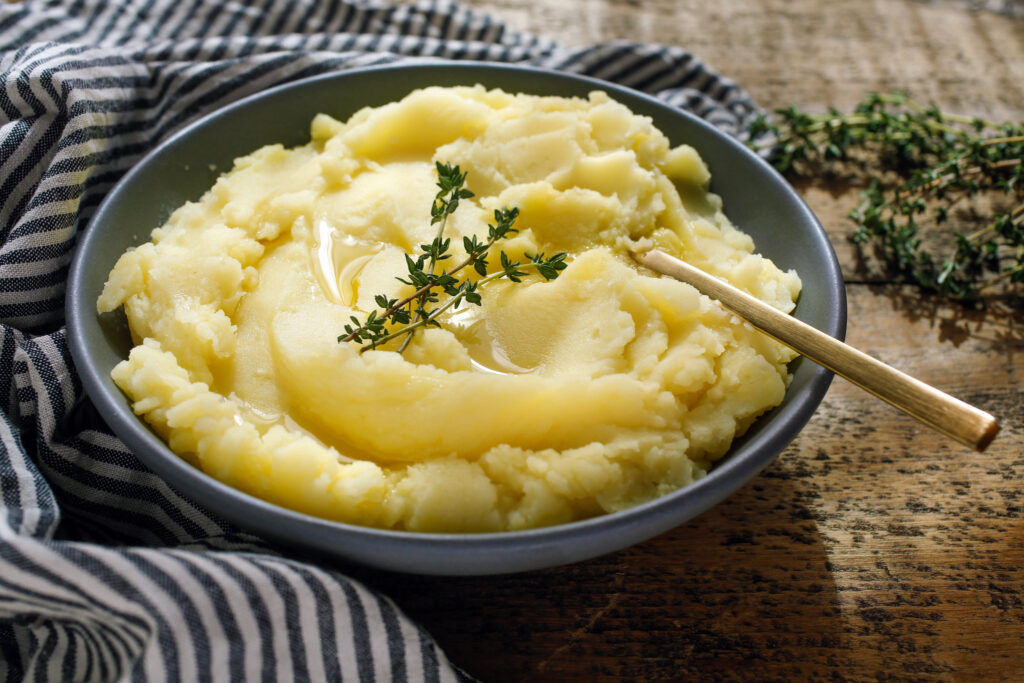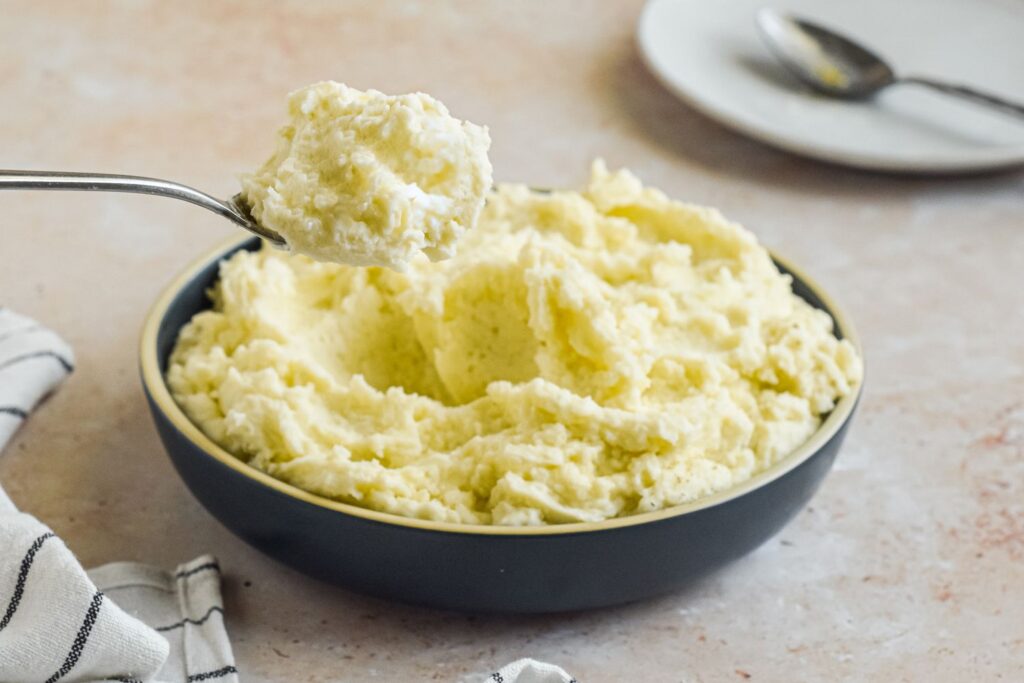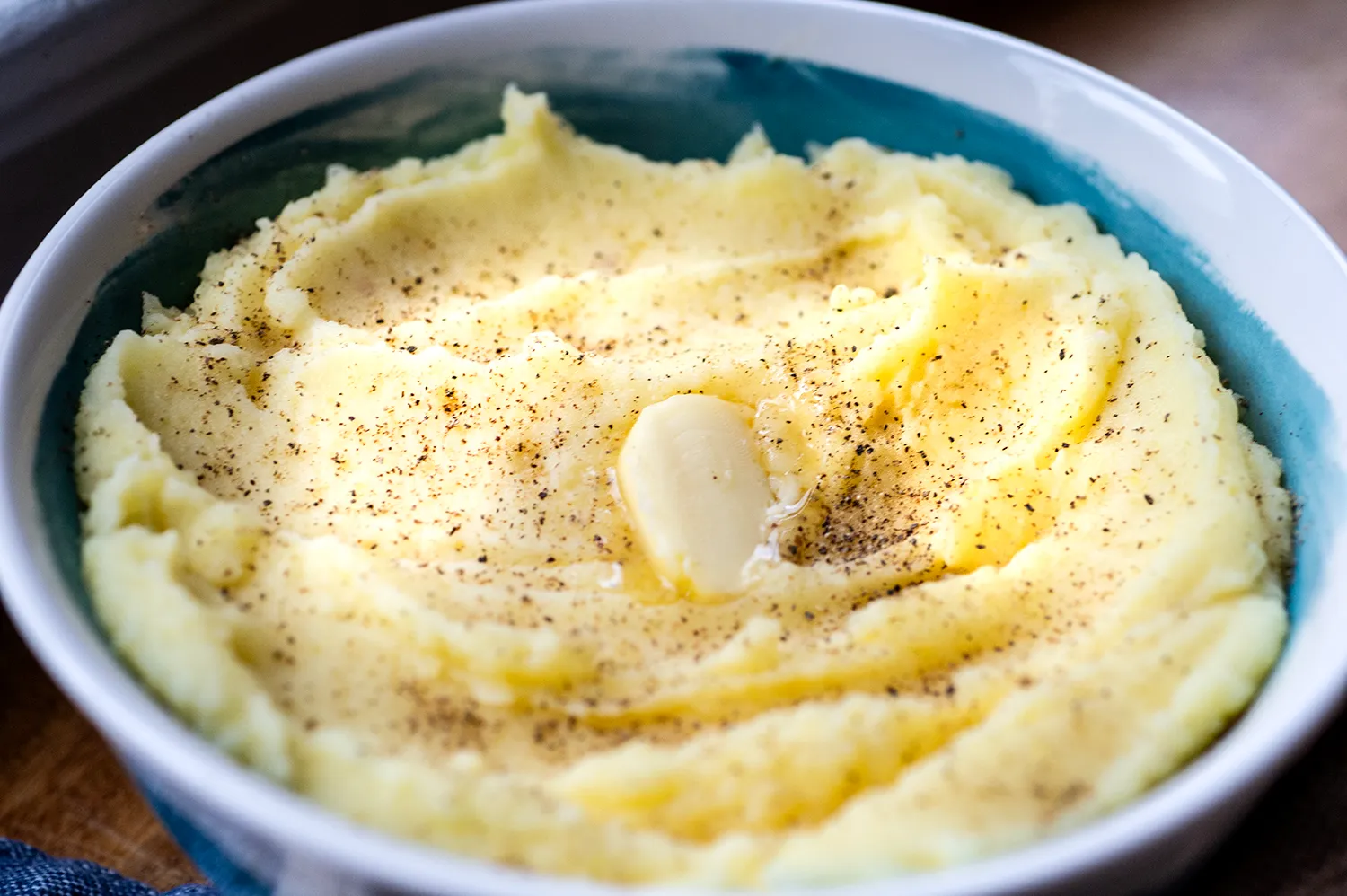Who doesn’t love a good serving of mashed potatoes? They’re the ultimate comfort food, perfect for cozy dinners and hearty meals.
But when summer rolls around, the idea of heavy, buttery mashed potatoes might seem a bit too much.
Fear not, because we’re here to revolutionize your summer dining with light and flavorful mashed potatoes that will leave you refreshed and satisfied.
In this ultimate guide, we’ll explore everything from choosing the right potatoes to incorporating unique flavors and tips for achieving the perfect texture. Ready to elevate your summer side dishes? Let’s dive in!

Why Light and Flavorful Mashed Potatoes?
Mashed potatoes often get a bad rap for being too rich and calorie-laden.
However, with a few simple tweaks, you can transform this classic dish into a lighter, more summery version.
Light mashed potatoes are perfect for pairing with grilled meats, fresh salads, and other summer favorites.
They’re easy to make, versatile, and can be dressed up with a variety of herbs, spices, and other ingredients to keep your taste buds excited.
Choosing the Right Potatoes
The Best Varieties for Light Mashed Potatoes
Not all potatoes are created equal when it comes to mashing.
For the lightest, fluffiest mashed potatoes, you want to choose a variety with a high starch content.
Russet potatoes are a top choice because they break down easily and create a creamy texture.
Yukon Gold potatoes are another excellent option, offering a buttery flavor and smooth consistency without the need for too much added fat.
Tips for Preparing Potatoes
Start by peeling your potatoes and cutting them into uniform pieces to ensure even cooking.
Rinse them under cold water to remove excess starch, which can make your mashed potatoes gluey.
Boil the potatoes in salted water until they’re fork-tender, but be careful not to overcook them, as this can also result in a gummy texture.
The Perfect Cooking Method
Boiling vs. Steaming
Boiling is the traditional method for cooking potatoes for mashing, but steaming can be a great alternative.
Steaming helps the potatoes retain more nutrients and can result in a fluffier texture. If you decide to boil, make sure to start with cold water and bring it to a boil gradually.
This ensures the potatoes cook evenly and prevents the outside from becoming mushy before the inside is fully cooked.
Draining and Drying
Once your potatoes are cooked, it’s crucial to drain them thoroughly.
Excess water can make your mashed potatoes watery and less flavorful.
After draining, return the potatoes to the hot pot for a minute or two to evaporate any remaining moisture.
This step, known as “drying,” helps achieve a fluffier texture.
Mashing Techniques
The Best Tools for the Job
When it comes to mashing, the tools you use can make a significant difference.
A potato masher or a ricer is ideal for creating smooth, lump-free mashed potatoes.
Avoid using a food processor or blender, as these can overwork the potatoes and make them gummy.
Adding Liquid Ingredients
For light and flavorful mashed potatoes, consider using a combination of milk and broth instead of heavy cream.
Warm your liquid ingredients before adding them to the potatoes to ensure they incorporate smoothly.
Start with a small amount and gradually add more until you reach your desired consistency.
Flavor Enhancements
Fresh Herbs and Spices
Summer is the perfect time to experiment with fresh herbs and spices.
Chives, parsley, dill, and rosemary are all excellent choices for adding a burst of flavor to your mashed potatoes.
For a bit of heat, try incorporating some freshly ground black pepper or a pinch of cayenne.
Infused Oils and Butters
Infused oils and butters can take your mashed potatoes to the next level.
Try adding a drizzle of garlic-infused olive oil or a pat of herb-infused butter.
These additions not only enhance the flavor but also add a delightful aroma that will make your dish irresistible.
Cheese and Dairy Alternatives
If you’re looking to keep things light, opt for grated Parmesan or a touch of goat cheese instead of heavier cheeses. These options provide plenty of flavor without weighing down your potatoes.
For a dairy-free alternative, try using unsweetened almond milk or coconut milk for a subtle yet delicious twist.

Creative Variations
Garlic and Herb Mashed Potatoes
For a classic twist, add roasted garlic and a mix of fresh herbs to your mashed potatoes.
Roast a head of garlic until it’s soft and caramelized, then squeeze the cloves out and mash them into the potatoes.
Add chopped herbs like thyme, rosemary, and parsley for a fragrant and flavorful dish.
Lemon and Dill Mashed Potatoes
For a bright and zesty variation, add lemon zest and fresh dill to your mashed potatoes.
The citrusy lemon zest and aromatic dill create a refreshing flavor profile that’s perfect for summer.
This variation pairs wonderfully with grilled fish or chicken.
Spicy Jalapeño Mashed Potatoes
If you’re a fan of heat, try incorporating finely chopped jalapeños into your mashed potatoes.
Remove the seeds for a milder heat, or leave them in if you’re feeling adventurous.
Add a squeeze of lime juice and some chopped cilantro for a Mexican-inspired twist.
Serving Suggestions
Perfect Pairings
Light and flavorful mashed potatoes are incredibly versatile and pair well with a variety of dishes.
Serve them alongside grilled meats, roasted vegetables, or a fresh summer salad.
They’re also a great accompaniment to lighter proteins like fish or chicken.
Garnishing Ideas
A simple garnish can elevate your mashed potatoes and make them look as good as they taste.
Try topping them with a sprinkle of fresh herbs, a drizzle of olive oil, or a dusting of smoked paprika. For an extra touch of elegance, add a few edible flowers or microgreens.
Tips for Making Ahead
Storing and Reheating
Mashed potatoes can be made ahead of time and stored in the refrigerator for up to three days.
To reheat, place them in a heatproof dish and cover with aluminum foil.
Warm in a low oven until heated through, stirring occasionally. Add a splash of milk or broth to refresh the texture if needed.
Freezing and Thawing
Mashed potatoes also freeze well. Place them in an airtight container and freeze for up to three months.
To thaw, transfer them to the refrigerator overnight. Reheat gently on the stovetop or in the oven, adding a bit of liquid to restore their creamy consistency.
Health Benefits of Light Mashed Potatoes
Nutritional Highlights
By choosing light ingredients and adding fresh herbs and spices, you can enjoy mashed potatoes that are not only delicious but also nutritious. Potatoes are a great source of vitamins C and B6, potassium, and fiber. Using broth and milk instead of heavy cream reduces the calorie content while still providing a creamy texture.
Low-Calorie Tips
To keep your mashed potatoes light and low-calorie, use a moderate amount of healthy fats like olive oil or avocado oil.
Incorporate plenty of fresh herbs and spices for flavor without adding extra calories.
Using a ricer or masher to achieve a fluffy texture means you won’t need to rely on butter and cream for creaminess.
Common Mistakes to Avoid
Overworking the Potatoes
One of the most common mistakes is overworking the potatoes, which can result in a gummy texture.
Mash them just until smooth and fluffy, being careful not to overmix.
Adding Cold Liquid
Adding cold milk or broth can cause your mashed potatoes to become lumpy.
Always warm your liquid ingredients before incorporating them into the potatoes.
Skipping the Drying Step
After draining your potatoes, always return them to the hot pot to evaporate any remaining moisture.
This step is crucial for achieving a light, fluffy texture.
Bringing It All Together
Step-by-Step Recipe
- Prepare the Potatoes: Peel and cut 2 pounds of Russet or Yukon Gold potatoes into uniform pieces.
- Cook the Potatoes: Place the potatoes in a large pot of cold, salted water. Bring to a boil and cook until fork-tender, about 15-20 minutes.
- Drain and Dry: Drain the potatoes thoroughly and return them to the hot pot for a minute or two to evaporate any remaining moisture.
- Mash the Potatoes: Using a potato masher or ricer, mash the potatoes until smooth.
- Add Liquid Ingredients: Gradually add 1/2 cup of warm milk and 1/4 cup of warm chicken or vegetable broth, mixing just until combined.
- Incorporate Flavors: Stir in 2 tablespoons of olive oil or butter, 1 teaspoon of salt, and any additional herbs or spices to taste.
- Serve and Enjoy: Garnish with fresh herbs and serve warm.
Conclusion
Light and flavorful mashed potatoes are a perfect addition to your summer dining repertoire.
By choosing the right potatoes, using proper techniques, and incorporating fresh herbs and spices, you can create a dish that’s both delicious and refreshing.
Whether you’re serving them at a family barbecue or enjoying a quiet dinner at home, these mashed potatoes are sure to be a hit.
So why not give them a try this summer? Your taste buds will thank you!

FAQs
1. Can I make these mashed potatoes vegan?
Absolutely! Simply use plant-based milk and butter alternatives. Unsweetened almond milk and vegan butter work great.
2. How can I add more flavor without extra calories?
Use plenty of fresh herbs and spices. Citrus zest, garlic, and infused oils add a ton of flavor without adding many calories.
3. Can I use sweet potatoes instead of regular potatoes?
Yes, sweet potatoes can be a delicious alternative. Follow the same steps, but adjust the seasoning to complement the natural sweetness.
4. What’s the best way to reheat mashed potatoes?
Reheat them in a low oven or on the stovetop, adding a splash of milk or broth to refresh the texture.
5. How can I prevent my mashed potatoes from becoming gummy?
Avoid overworking the potatoes and use a ricer or masher instead of a blender or food processor. Also, be sure to dry the potatoes thoroughly after draining.
